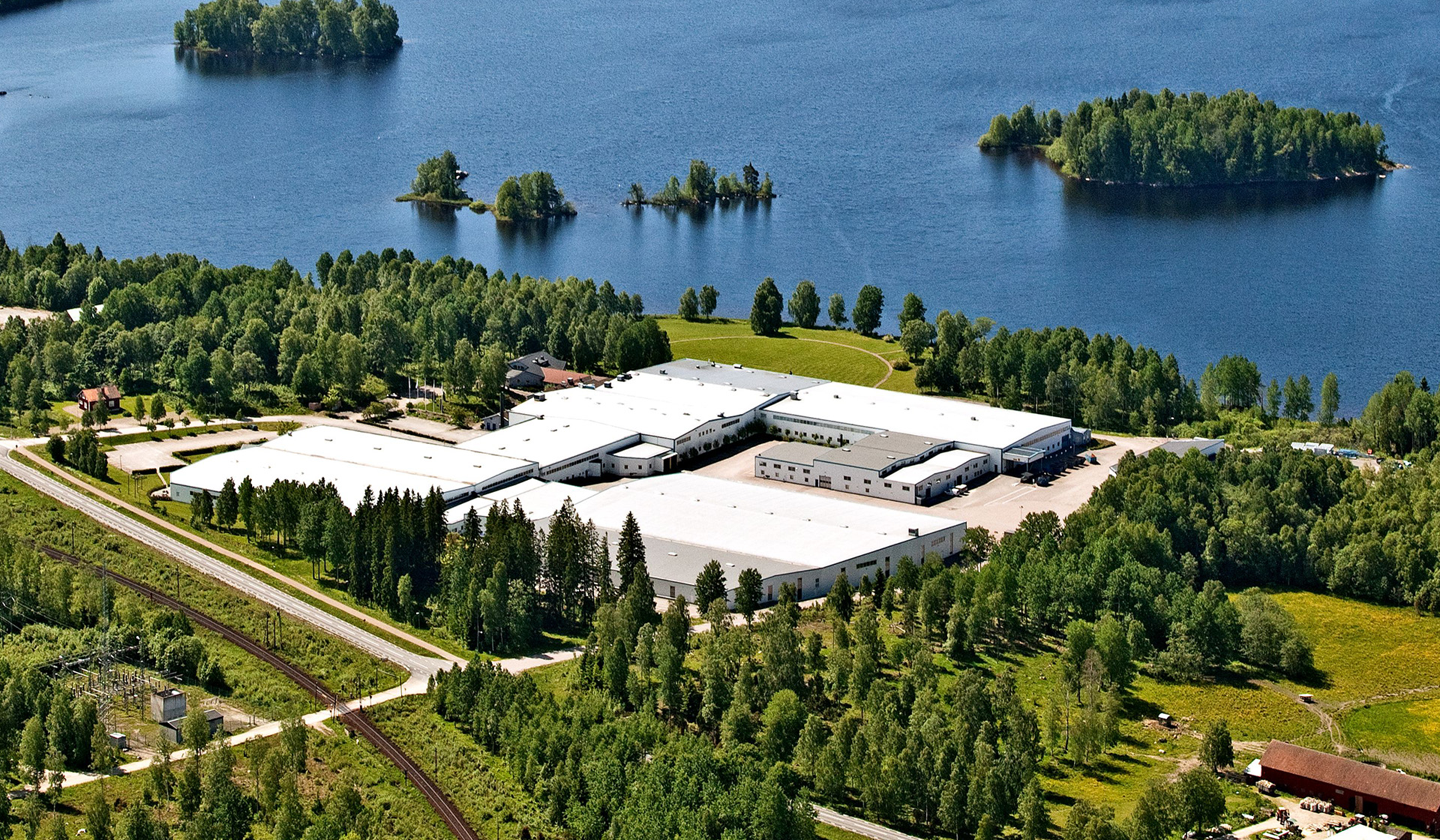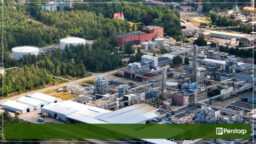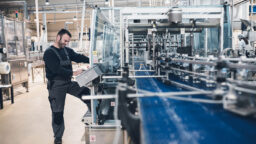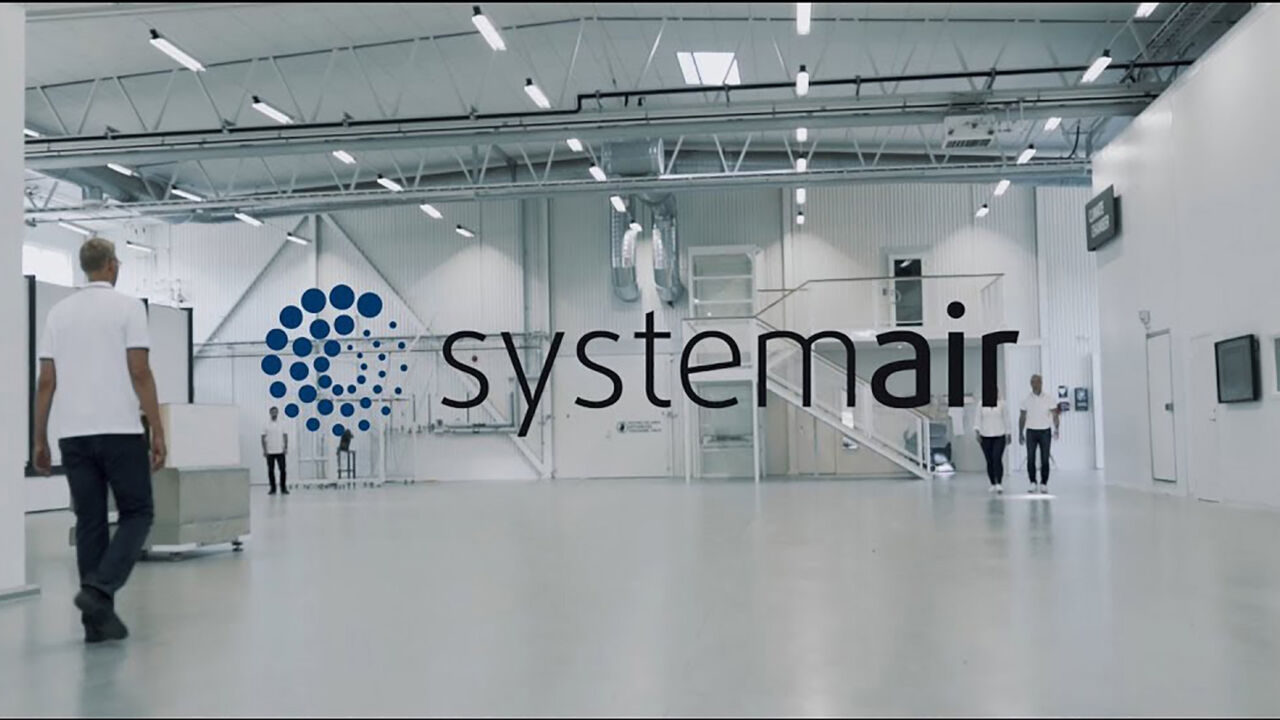When business is booming, there’s often little time for reflection and change, but sooner or later, the need to strengthen business processes catches up. Systemair, the global supplier of high-quality ventilation, heating, and cooling products, reached this point in 2019 and turned to Optimity for a solution.
Building a resilient supply chain
Even before the pandemic hit, Systemair had recognized the need to build a more resilient and agile supply chain. The company needed a more holistic approach to running the business, including better capacity, production, and inventory planning.
Magnus Karlsson, who is Supply Chain Manager at Systemair, oversaw the company’s efforts. He highlights the importance of viewing the supply chain as a whole, “At our Swedish production facility, we have over 40 assembly stations and 300 factory workers producing 2,500 products. We also handle a trading assortment with over 30,000 items. We needed a complete picture of the supply chain to ensure supply and demand were balanced correctly. A modern planning system was the only way to achieve this. No matter how clever you are, it will always beat Excel and pen-and-paper methods.”
“A modern planning system will always beat Excel and pen-and-paper methods.”Magnus Karlsson
Supply Chain Manager, Systemair
Magnus wanted a solution where Systemair could plan and compare different scenarios to deal with the ever-increasing economic, geopolitical, and supply chain uncertainty.
He explains, “Scenario planning is essential to us. For example, what happens if you can no longer sell into a major market? Or how does a new product line impact our production, sales, and margins? During the pandemic, we used Optimity daily to simulate different scenarios. This allowed us to prepare in case we didn’t receive certain components as planned. We wanted to know, not speculate.”
Picking the right partner
Optimity first came to Magnus’ attention in 2019. “I’m a strong believer in a good supplier fit. We always look for balanced partnerships where we understand each other and can collaborate to create value. In my previous job, everything was on a different scale. We were matched with the largest vendors, where discussions are more conceptual. That’s not Systemair. We’re still a young, fast-growing, entrepreneurial company. For us, Optimity was a much better fit. They’re agile, responsive, and able to grow with us.”
Supply Chain Developer, Dennis Hedström says, “Optimity came across well throughout the evaluation process. It’s a fully integrated product suite that can be implemented module by module. This aligned well with how we planned to run the project.” He continues, “Optimity also offers best-of-breed functionality. A good example is the Expert Selection feature, where the system determines the best forecasting algorithm for each product and location. It enables a whole new level of automation.”
Magnus adds, “The Optimity team understood our situation and desire to become more agile and demand-driven. It was evident they could meet the requirements for our Swedish operation, but also for a group-wide rollout with solutions that fit both large plants and smaller regional warehouses.”
The Systemair Group signed off on the project in February 2020, just as the world as we knew it was about to change.
The implementation
The timing of the project was far from ideal. Magnus recalls, “We started at the worst time possible. It was mid-pandemic, with lots of absences.”
The first goal was to improve forecast accuracy. Dennis, who oversees demand planning, provides some background, “In the past, we used a simple moving average to forecast all products – even though we knew that some were seasonal, others slow-moving, and so on. It didn’t make any sense, but our systems restricted us.”
This has all changed with Optimity, and Dennis can now manage most of the demand planning process himself. “We’re much quicker, so we can now focus more on analysis and presenting our findings to the organization.” With the first business area up and running with Demand Forecaster, the team moved on to the Supply Chain Optimizer, SCO.
Planning Manager Linda Engberg is the SCO system owner. She explains the new planning process: “We generate two plans in SCO. The first is a 24-month capacity and critical component requirements plan for tactical and strategic decision-making. The second is an 18-week operational plan that we pass to production for detailed scheduling and execution. The system models our production capacity, available staff hours, and critical component availability. We’re really pleased with the quality of the plans.”
“The system models our production capacity, available staff hours, and critical component availability. We’re really pleased with the quality of the plans.”Linda Engberg
Planning Manager, Systemair
Systemair has also implemented Optimity’s Inventory Optimization solution. With over 30,000 sellable products, structured classification is essential. “We had products sitting on the shelves that didn’t belong there. Inventory Optimizer determines which items should be made-to-stock vs. made-to-order. The system also provides optimal safety stock levels and order quantities for the stock items.” says Dennis.
Effective S&OP
Supporting an effective S&OP process was another important criterion for Systemair. “In the past, our S&OP meetings were more like information sessions where we presented what had happened the month before,” says Magnus. “We now have more informed and data-driven discussions. Optimity allows us to spot potential problems and propose alternative solutions,”
He continues, “Without a good forecast, S&OP falls flat. The way we go to market lends itself to using a statistical forecast as a baseline and then fine-tuning that with available market intelligence and campaign information. Also, the ability to generate both finite and infinite plans is very beneficial. We now create a finite capacity plan for the factory and a separate, infinite capacity plan to support longer-term strategic and capacity planning.”
“We create a finite capacity plan for the factory and a separate, infinite capacity plan to support longer-term strategic and capacity planning.”Magnus Karlsson
Supply Chain Manager, Systemair
Managing change
The pandemic turned out to be a double-edged sword for Systemair. While disrupting the business, it also highlighted the importance of a good indoor climate. “Unsurprisingly, our forecast accuracy was not the best in year one. We had to make a lot of adjustments,” says Dennis.
Aside from the pandemic, Dennis says change management was the team’s biggest challenge. “Implementing new processes always takes time and effort, and Optimity fundamentally changes how you plan.” Magnus shares Dennis’s view, “You’re taking several steps in your evolution. This is not the same as changing your ERP system. It’s a completely different way of working. People might question both their own role and that of the system. Can the black box do this better than me? Can I trust it? How does it work? It’s all part of the change process and needs to be managed.”
Meeting the project goals
The project has already delivered on its promise with improved forecast accuracy, inventory levels, and customer service. “We’ve reduced inventory by 20-22%, just as set out in the business case. We measure inventory levels over time to give a fair reflection,” says Magnus.
“We’ve reduced inventory by 20-22%, just as set out in the business case.”Magnus Karlsson
Supply Chain Manager, Systemair
The team has implemented stock-build periods for many product groups, ensuring enough inventory going into the summer holidays and avoiding unnecessary overtime. “The plant manager and production schedulers are happy. We’re filling the factory better and can flag potential resource and material issues. Unlike an ERP system, Optimity gives us a lot of ammunition to answer relevant questions. It makes everyone’s lives easier,” says Magnus.
Systemair’s forecast accuracy and customer service level have also improved. Both metrics are now stable above 90%. “Optimity allows us to monitor our forecasting performance and work systematically towards improving further. For example, we can see why we ended up with too much inventory in a period or missed an order. It’s a big step forward,” says Dennis.
Lessons learned
The project was delivered in stages and with a small team. It took a bit longer, but Magnus has no regrets. “We felt it was important not to bite off more than we could chew. We spent quite a bit of time looking at our data and analyzing the plans. Feeling comfortable with the results is important before pushing them out to the organization. We also came in on budget, which is not always the case with IT projects.”
Implementing Optimity has forced Systemair to challenge existing ways of working. Dennis thinks finding the right balance is critical, “It’s often a question of changing the system or our processes. We set out with a mindset to implement best practices wherever possible. Rasmus, our lead Optimity consultant, is very experienced. He listened to our needs and suggestions but also challenged us to do things differently. There’s so much to learn, and the Optimity team has brought a lot of knowledge and experience to the table.”
“Our production plans and inventory levels are much more stable today. We no longer see the massive swings of the past. This is exactly what we’re trying to achieve.”Dennis Hedström
Supply Chain Developer, Systemair
On the horizon
The local leadership team has been involved from the outset and has had the opportunity to ask questions and make suggestions. “The level of management interest is only growing as the project bears more and more fruit. It’s great for us as we move forward and encouraging for all involved,” says Magnus.
Dennis thinks there’s a strong case for Optimity’s Production Scheduler in the future. “We have a paint shop and fabrication area, two assembly areas at one site, and another across town. Unlike the daily buckets in our ERP, Optimity can provide us with optimization and minute-by-minute control.”
The project team is currently considering a rollout to the rest of the business. “We’ve shown the solution to some other regions, and they are very interested in what we’re doing,” says Dennis. He summarizes, “The pandemic meant we were off to a rocky start, but we’ve come through it. Our production plans and inventory levels are much more stable today. We no longer see the massive swings of the past. This is exactly what we’re trying to achieve. That said, we can still get a lot more from Optimity. We’re only getting started.”
About Systemair
Systemair is a leading global supplier of high-quality ventilation, heating, and cooling products and systems. The company has operations in 54 countries across Europe, North America, South America, the Middle East, Asia, Australia, and Africa.
Since 1974, Systemair has served customers with sustainable and energy-efficient HVAC products and solutions that contribute to an improved indoor climate and reduced carbon dioxide emissions. Systemair Group has an annual turnover of SEK 12.1 Bn and employs 6,600 people. The company is headquartered in Skinnskatteberg, Sweden.
To find out more about Systemair’s project and how they’re optimizing their supply chain, contact Tomas Wennerstein.
Get all the latest industry trends, updates & news from Optimity















